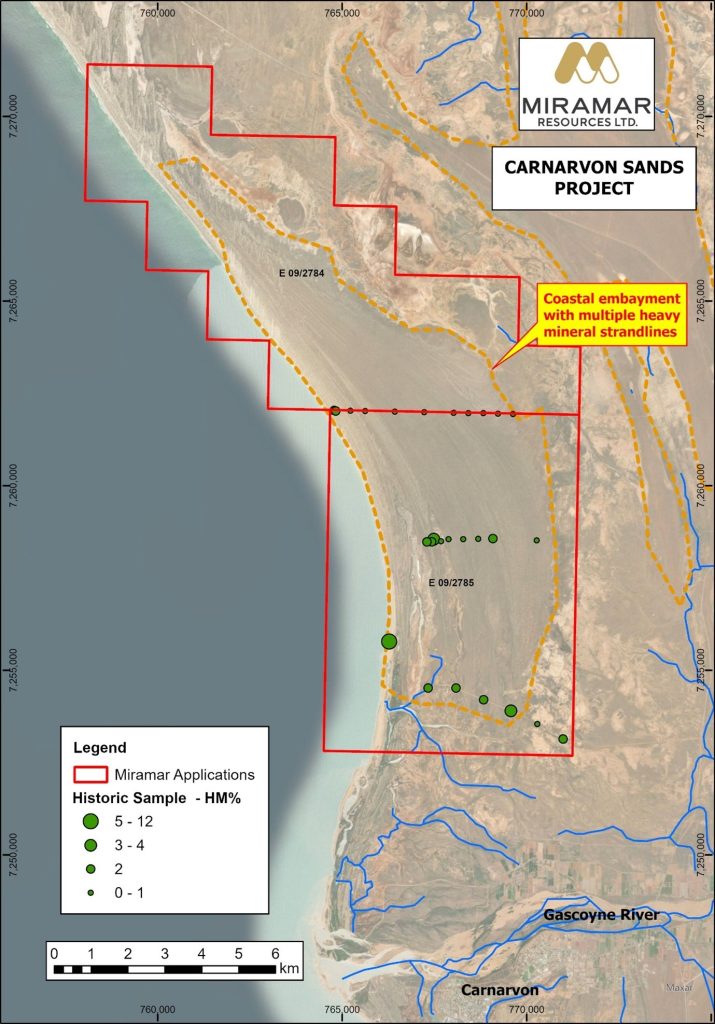Miramar has four exploration projects within the Proterozoic Capricorn Orogen of Western Australia.
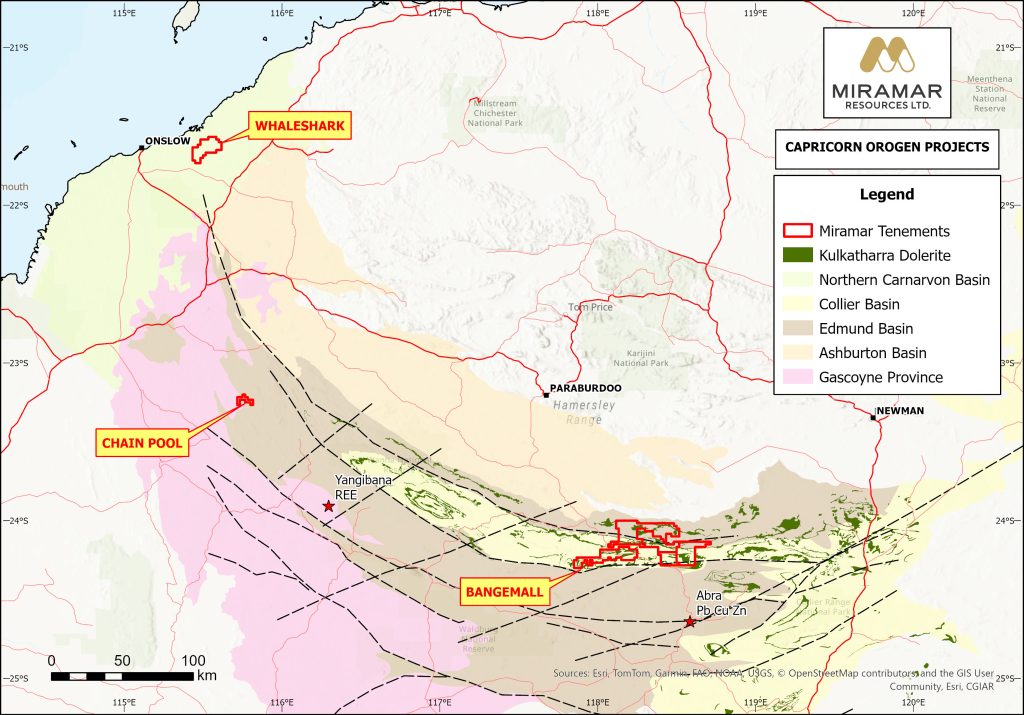
Miramar has several granted Exploration Licences which are prospective for Proterozoic Norilsk-style magmatic Ni-Cu-Co-PGE mineralisation associated with 1070Ma Kulkatharra Dolerite sills. The Kulkatharra Dolerite sills are the same age as the Giles Complex, host to the large Nebo and Babel Ni-Cu deposits in the West Musgraves.
Since 2020, Miramar has built a strategic land position in the Bangemall region, focussing on areas containing key ingredients and/or regional-scale indicators for Norilsk-style Ni-Cu-Co-PGE mineralisation.
Miramar began exploring for Noril’sk-style mafic intrusion-hosted Ni-Cu-PGE deposits in 2021 and, in February 2025, announced that EIS co-funded RC drilling at Mount Vernon had discovered disseminated nickel and copper sulphides within differentiated Kulkatharra Dolerite sills for the first time.
The Edmund and Collier Basins have been recognised by the Geological Survey of WA, Geoscience Australia and the CSIRO as having potential for Noril’sk-style mineralisation, however Miramar is the first company to specifically target this style of mineralisation in this region. Since commencing exploration at Bangemall, Miramar has demonstrated the existence of differentiated dolerite sills, mafic cumulate rocks and disseminated nickel and copper sulphides, thereby proving the Noril’sk concept.
In August 2025 Miramar announced it had signed a signed a Non-Binding Term Sheet for an Exploration Joint Venture with Sumitomo Metal Mining Oceania Pty Ltd over the Bangemall Project.
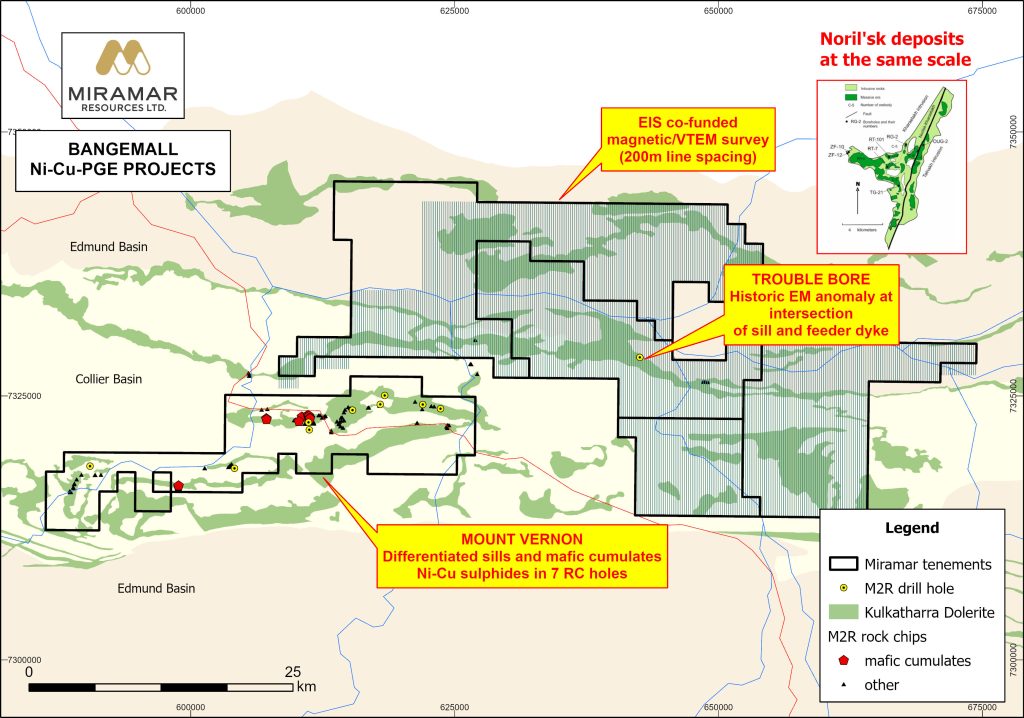
The Whaleshark Copper-Gold project is located in the Ashburton region of WA, approximately 40km east of Onslow. The Project is characterised by a large Proterozoic banded iron formation and granite intrusion beneath approximately 100m of Cretaceous sediments of the Northern Carnarvon Basin.
The Project has potential for discovery of a large shallow iron-oxide copper-gold (IOCG) deposit such as Ernest Henry, Starra, Carrapateena and Prominent Hill, but with the advantage of much shallower cover.
Since commencing exploration at Whaleshark in mid-2021, Miramar has identified strongly anomalous Cu, Co, Au, Ag and other IOCG pathfinders in shallow aircore drilling beneath surface geochemical anomalism.
In addition, comparison of results from aircore drilling at Whaleshark with published results from research carried out at the Prominent Hill IOCG deposit in South Australia also indicate the potential for the rare earth element (REE) anomalism seen at Whaleshark to be related to buried IOCG mineralisation.
In 2023, EIS Co-Funded diamond drilling intersected copper sulphide mineralisation in two holes drilled into the Whaleshark granodiorite.
The Whaleshark Project has significant potential for copper, gold and magnetite iron mineralisation.
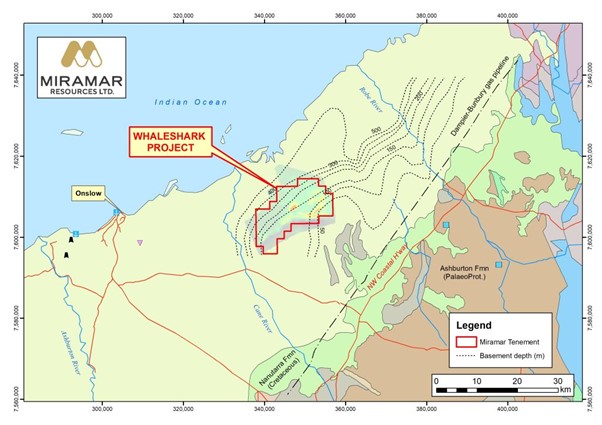
The Chain Pool Project is located approximately 275km northeast of Carnarvon and consists of one granted Exploration Licence. The Project straddles the boundary between the Gascoyne Province and the Edmund Basin. The western half of the tenement covers a granitoid intrusion of the Durlacher Supersuite and the eastern half of the tenement covers sediments of the Edmund Basin and includes the historic Joy Helen Cu-Pb-Zn-Ag workings, which has been previously described as a sedimentary exhalative (SEDEX) base metal occurence.
Both geological sequences are crosscut by later dykes of the 750Ma Mundine Well Suite which is the same unit that hosts the Mangaroon Ni-Cu-PGE occurrence further south.
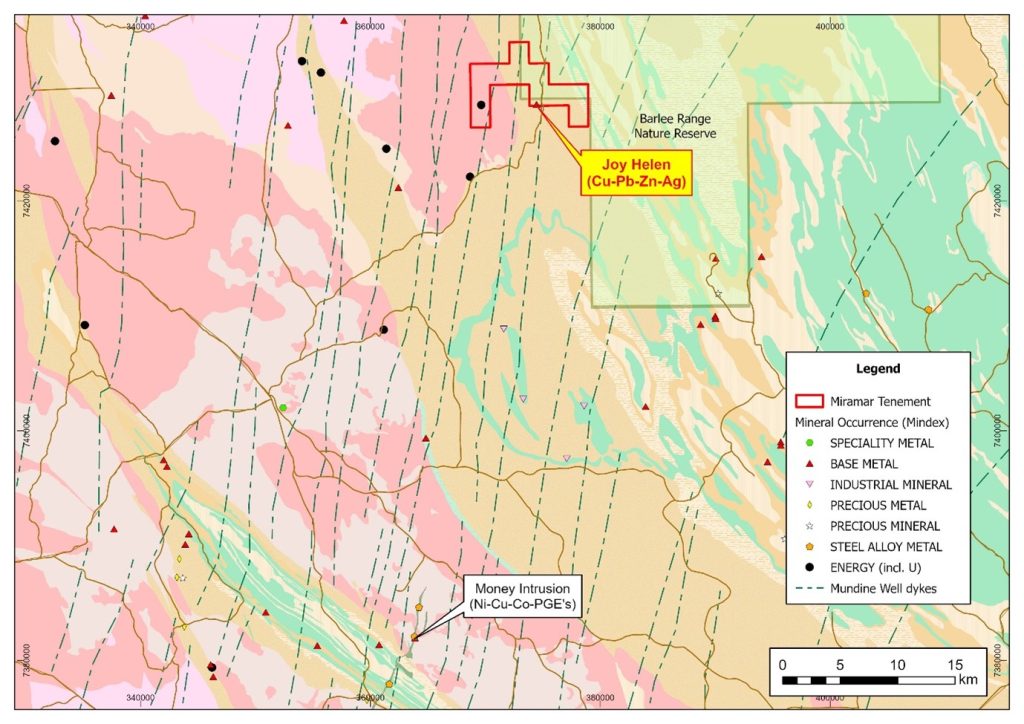
Miramar has submitted applications for two new Exploration Licences over a large heavy mineral sands +/- rare earth element (REE) placer target in the Gascoyne region of Western Australia. The target is characterised by a large coastal embayment north of the mouth of the Gascoyne River where a series of parallel historical shorelines are seen. The Gascoyne River drains a very large catchment area covering approximately 71,000 square kilometres and containing several significant bedrock REE discoveries.
The local geological setting of the target is analogous to the Coburn minerals sands project, near Shark Bay, and other heavy mineral sands (+/- REE) deposits along the west coast of Australia. Heavy mineral strandline deposits form along current and historic coastlines as a result of persistent wave action and the resulting separation of denser minerals from beach sands.
Previous workers looking for heavy mineral sands in the area identified REE-bearing heavy minerals, including monazite and xenotime, but no systematic REE-focussed work was completed. Limited historical surface sampling across the embayment identified additional heavy mineral strandlines, with heavy mineral contents above 1% and up to 12%, but no drilling or REE-focussed work was completed. Compared with published results from the discovery of the Jacinth-Ambrosia deposits in South Australia, anything over 1% heavy minerals is considered significant.
Once granted, the Company plans to conduct systematic surface sampling and shallow auger and/or aircore drilling to test for accumulations of heavy mineral sands, including REE-bearing heavy minerals.
